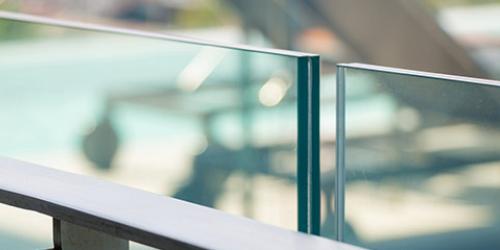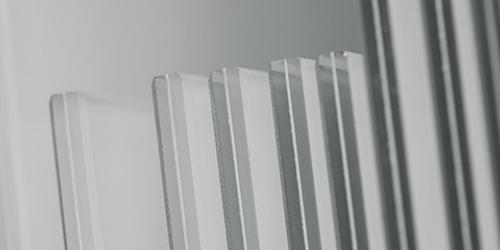Does your interlayer pass the creep test?

“Creep” occurs when stresses cause solid materials to move slowly. Using this methodology for laminated glass, the sample is held vertically and one of the glass pieces is unsupported. The weight of the unsupported glass under high temperature can cause the interlayer to deform or creep, causing an offset of the two glass pieces. Understanding and evaluating high-temperature performance of interlayers in this manner is necessary to properly specify interlayers when glass deformation is critical.
When comparing Saflex® PVB and Ionoplast, the difference in the response of unsupported glass panels in the vertical creep test is due to the differences in product chemistry. Saflex® PVB interlayers are amorphous, and although they soften, they are stable when exposed to typical heat conditions encountered in use or in testing because of intermolecular hydrogen bonding and polymer chain entanglement. Ionoplast interlayers are ethylene and methacrylic acid based. Although it has ionic cross-linking that makes it stiff at low temperatures, the ionic cross-linking destabilizes at certain temperatures (at about 60°C)—similar to a melt temperature.
Chemical entanglement from ionic or hydrogen bonding helps keep materials from moving in this test.
When the Ionoplast ionic bonds dissociate, there is not enough residual entanglement to resist flow, thus the unsupported piece of glass creeps.
Hydrogen bonds in PVB interlayers tend not to dissociate completely until above 100°C. The remaining hydrogen bonding and strong polymer entanglement in PVB interlayer formulation can prevent or minimize the amount of unsupported glass creep seen in this test.
The temperature chosen for this test was intentional and twofold. First, laminated glass is deemed durable as a safety glass after passing exposure at 100°C for 2 or 16 hours, depending on the test selected. Second, 100°C is above the temperature needed to allow hydrogen bonding dissociation in all types of interlayers, allowing an apples-to-apples comparison.
Not all interlayers perform the same. Consult your Eastman representative for further information.










